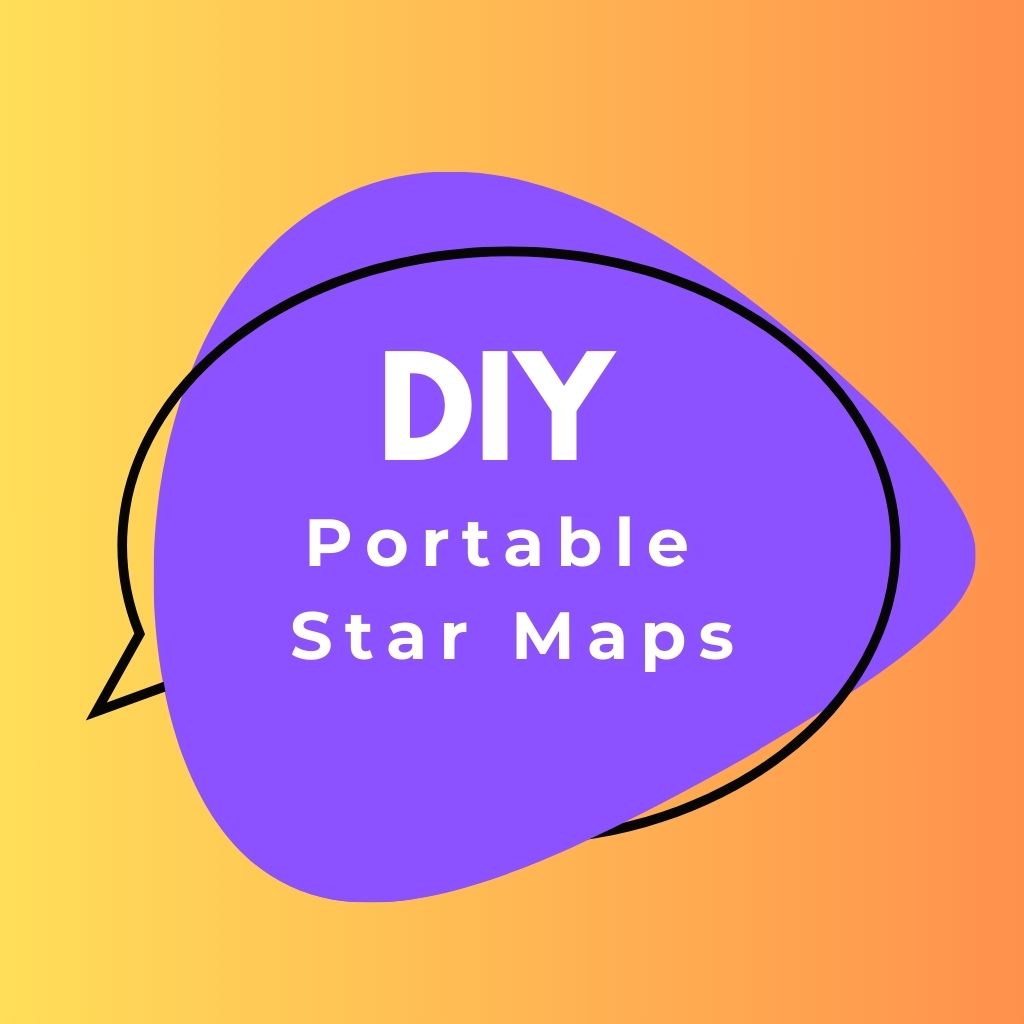This site contains affiliate links to products. I may receive a commission for purchases made through these links.
Ever looked up at the night sky and wished you could take those twinkling stars home with you? Well, I’m here to tell you that you can, in a way. I’m going to show you how to create your very own DIY portable star maps.
This isn’t just a fun and engaging project. It’s also a great way to learn more about our universe. You’ll get to know your way around the night sky, and you’ll have a handy guide you can take with you anywhere.
Whether you’re planning a stargazing trip or simply want to impress your friends with your astronomical knowledge, a DIY portable star map is the perfect tool. So, let’s get started and bring the stars a little closer to home.
Materials Needed
Now that we’ve gotten you excited about creating your own portable star map, it’s time to gather the necessary materials. And don’t worry, I’ll make sure to guide you through each step of the process.
First off, you’ll need a blank sheet for your star map. It could be any type you prefer; I recommend a thick, sturdy paper for durability. The size depends on your preference, although A3 is an excellent starting point.
A ruler and a comprehensive marker pen are required for accuracy and clarity. Ensure the pen is dark enough to create contrast against your paper, and the ruler’s purpose is to guide you in inscribing the major lines on your map.
With the basic structure outlined, it’s time to add in the vital features – the stars. You’ll need a protractor for accurately plotting star positions. Small, sticky dots in multiple colors can be immensely helpful in differentiating between major and minor stars.
But how do you know where the stars lie? For this, you’ll need a star atlas. This invaluable tool provides detailed maps of star positions in the night sky. They’re easily accessible, you can purchase a physical copy or download an app version on your mobile device.
Finally, be prepared to miss a few stars here and there. An eraser will come in handy for removing any mistakes and perfecting your star map.
Now with all these materials gathered, you’re one step closer to having your portable map of the night sky.
Here’s a quick rundown of what you’ll need:
- Blank sheet
- Ruler
- Marker Pen
- Protractor
- Small, Sticky Dots
- Star Atlas
- Eraser
Step 1: Gathering Astronomical Data
First of all, identifying the location is essential. After all, when it comes to star maps, “one size fits all” is far from reality. The stars you’ll see in the night sky will differ based on your geographic location and the season. So, make sure you’re aware of your locale and choose the right map accordingly.
Next, it’s time to look for a high-quality star atlas. A star atlas, for those who aren’t familiar with the term, is a comprehensive guide of the night sky. It contains detailed charts and diagrams that pinpoint the exact positions of stars, constellations, galaxies, and more. Numerous star atlases are available online, and many of them are free.
The importance of a great star atlas can’t be overstated. Remember – your DIY project’s success hinges on the data you gather from it.
If you’re creating your star map for a particular date, you’ll need to account for that as well. Stars might appear to shift from day to day due to Earth’s rotation. You can find accurate and up-to-date star data on various astronomical websites or apps.
Lastly, decide on the scale of your map. You’ll need to determine how much of the night sky you want to cover and how detailed you want your map to be. If you’re a novice at this, I recommend starting small – stick to the most visible, easily recognizable constellations and stars. But if you’re up for a challenge, you might choose to include more obscure celestial bodies.
Quick tip: When gathering star data, keep an eye out for asterisms. These are recognizable patterns of stars that might not form an official constellation but are handy for navigational purposes.
So with these factors in mind, we’re ready to start gathering data. The next steps will involve translating this data into a physical form on your star map. And remember, patience is key. It might take a little time, but I assure you, the end result will be well worth the effort.
Step 2: Creating the Star Map Design
Now that we’ve got our essential materials and data, let’s dive into the fun part: crafting the actual star map design. This part combines science, art, and a bit of personal style. You’ll want to bring your creativity to the table here, but also keep in mind the crucial element of accuracy. Your star map, no matter how artistically rendered, needs to accurately reflect the night sky.
First, create a grid on your sturdy paper. This grid will act as a guide and help you translate the data you gathered into a physical arrangement of stars. It’s a direct method of transferring the precise layout of the universe to your paper. Keep in mind, paper thickness matters because you’ll be potentially pressing hard as you make the grid and design your map.
When arranging the stars on your map, reference your star atlas or the star data you’ve collected. Be meticulous. Map out prime features like planets, constellations, and notable stars. Use dots, circles, or any other mark you desire to represent these celestial bodies. Consider drawing the constellation lines, which can act as guides and improve the readability of your map.
For the map’s scale, decide based on what works for you and the size of your paper. Larger scales make for more detailed maps but may require a larger sheet of paper. Smaller scales may be less detailed, but useful for generating a broad overview of the cosmos or fitting into a smaller, portable format. Strike a balance between detail and portability that fits your needs.
Lastly, don’t forget about aesthetics. Make your map visually pleasing by adding your personal touches. Maybe you want to illustrate more than just the stars. You could include other celestial objects like comets, nebulae or galaxies. Perhaps you prefer a minimalist design, focusing solely on the constellations. The design is up to you.
So, get your tools ready. It’s time to step into the shoes of an ancient astronomer and begin mapping the stars.
Step 3: Transferring the Design to the Plate
In the previous step, I’ve given exhaustive details about how to sketch out your design on paper. Now, let’s get into what is essentially the meat of our DIY project: transferring your star map design to the plate.
First, you’ll need to secure your design template to the plate. Using a fixative (such as a light adhesive spray) is an ideal way to do this. Make sure your layout is precisely aligned. The adhesive should keep things in place but should be easy enough to remove once you’re done.
Now onto what I like to call the ‘dot and trace method’. Using a pointed tool, make a series of dots through your paper template outlining the stars and constellations. After all points have been marked, remove the paper.
What you’ll have is a dotted outline of your star map right there on the plate! Now, time to bring this map to life! Use a fine-tipped marker or a specially made engraving pen (if you have one handy) to trace over these dot-to-dot outlines. Remember, the goal here is to make the design durable, legible and visually pleasing. So, take your time!
While working, keep a soft cloth nearby to gently wipe away any excess ink or dust that forms. It’s crucial to ensure that your work area remains clean and your lines stay crisp.
When it comes to adding personal touches or individual aesthetic elements, I say go for it! As your own cartographer of the cosmos, feel free to embellish your map with your own creative expressions. Try adding famous constellations in bold or other points of interest in the galaxy.
Remember, though, the main point of this project isn’t just to create an aesthetically pleasing piece, but rather a functional navigation tool. Therefore, while details are crucial, don’t lose sight of the broader purpose. Now, with the design transferred, you’re nearing the end of your DIY journey. The last step would be to seal and protect your work, but that’s a story for another time.
Step 4: Assembling the Portable Star Map
Once you’ve transferred the map design and added your personal touch, it’s now time to assemble everything to create your portable star map. The assembly process, like any step in this DIY project, requires patience, precision, and care.
To start, gather all the tools you’ll need. A sturdy backing board to mount the star map is essential. Get some high-quality adhesive – glue sticks or spray adhesive work best. Remember, lightweight adhesive won’t be enough to secure your map in place while heavy-duty adhesive might wrinkle the paper. Double-sided tape can also be a decent option, ensuring a flat, mess-free finish.
Prep your worktable, spreading out all the tools and materials. Place the backing board on the table and carefully align the star map on it. Here’s a pro tip: check and double check alignment before applying any adhesive.
With alignment done, gradually apply the adhesive to the board or the back of the map, avoiding any spills or drips outside the application area. Once you’ve applied the adhesive, carefully lay the map on the board starting from one edge and smoothly press towards the other edge, pushing out any air bubbles that might be trapped.
If you want to add any additional elements like a border or a label, now’s the time. Just remember to balance creativity with practicality. After all, the map should be functional, clear, and easy to read.
At this point, you might ask, “Is it done yet?” Patience folks! There’s still a tad bit more to do here. To ensure the longevity of your star map, let’s not forget the essential final step – protecting the assembled map. Whether you decide to laminate it, mount it behind a glass frame or seal it with a clear protective spray, choose the option that works best for you and fits the purpose of your star map.
Step 5: Testing and Using Your DIY Portable Star Map
After the creative process comes the exciting part – testing out your new DIY Portable Star Map. This isn’t just a step; it’s an adventure into the cosmos from your backyard. You’ll be testing how accurate and practical your star map is and hopefully, getting a first-hand experience of the incredible night sky.
To test your star map, choose a clear night with minimal light pollution. A moonless night, far from city lights, will give you the best view of the stars. But what if you can’t escape the city lights? Do not fret, just focus your efforts on identifying the brighter stars and constellations that cut through the urban light.
I prefer to test my star maps by comparing them directly with the live night sky – looking up and down, back and forth. I find it fascinating to see how the points of light in the sky match up with the markings on my map. It’s fun, it’s engaging, and importantly, it educates you about the night sky.
Remember, patience is key. Initially, you may find it challenging to identify constellations, planets, and stars. It’s perfectly normal, especially if you’re new to stargazing. Keep at it, and you’ll soon get the hang of it.
For the best stargazing experience:
- Bring along a flashlight with a red filter to preserve your night vision.
- Have a seat or a comfortable blanket to lie on.
- Ensure you have warm clothing; it can get chilly under the stars.
Conclusion
So there you have it! With a bit of patience and accuracy, you can create your own portable star map that’s not just functional but also a work of art. Remember, it’s all about getting the details right – from choosing the right paper and backing board to using a reliable star atlas for accurate star positions.
Don’t forget to protect your creation for longevity. And when it’s time to put your star map to use, choose a clear, dark night and dress warmly for a comfortable stargazing experience. With your DIY star map in hand, the cosmos is yours to explore. Happy stargazing!





